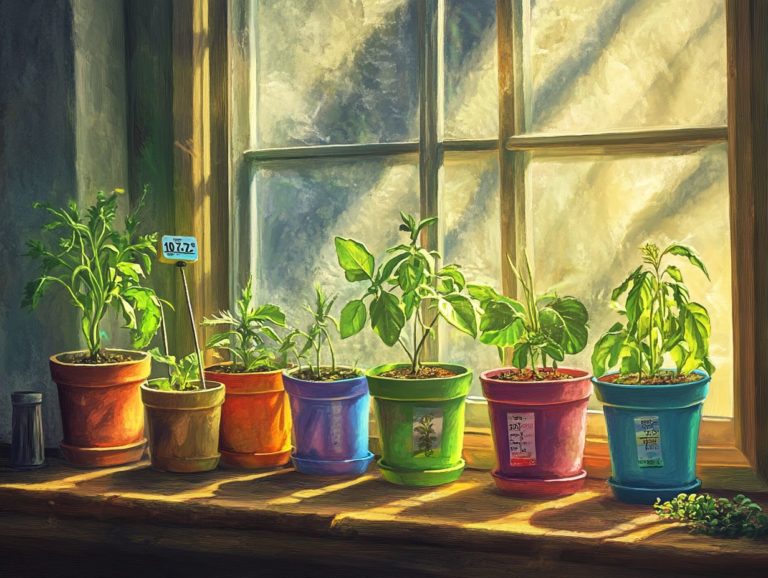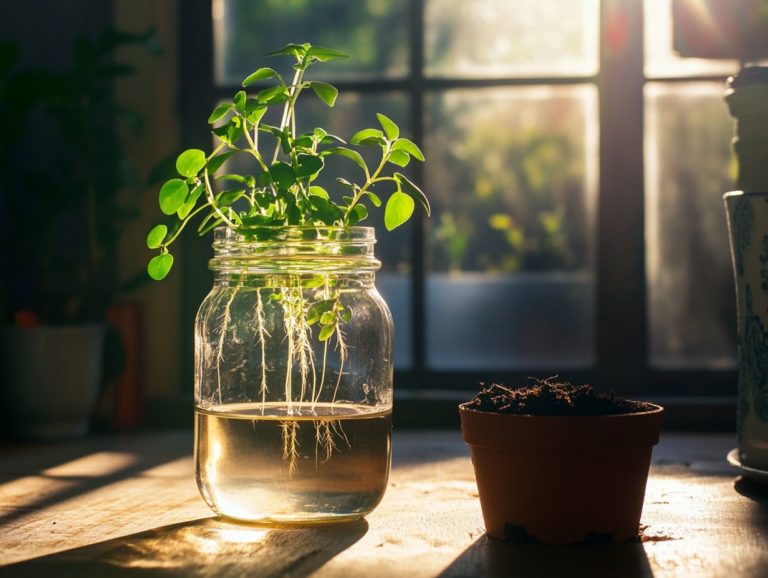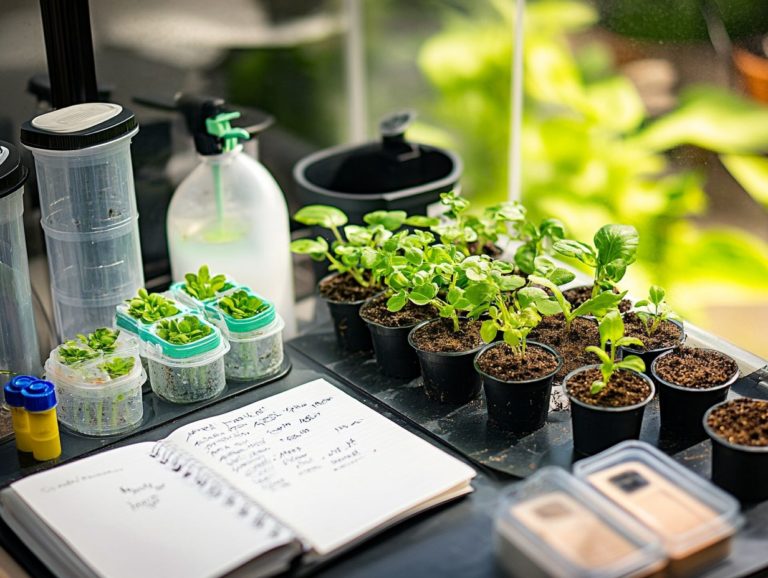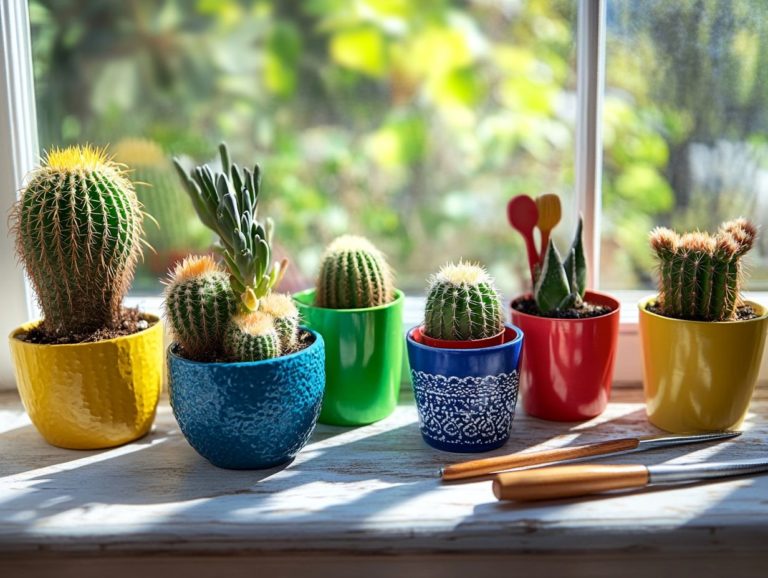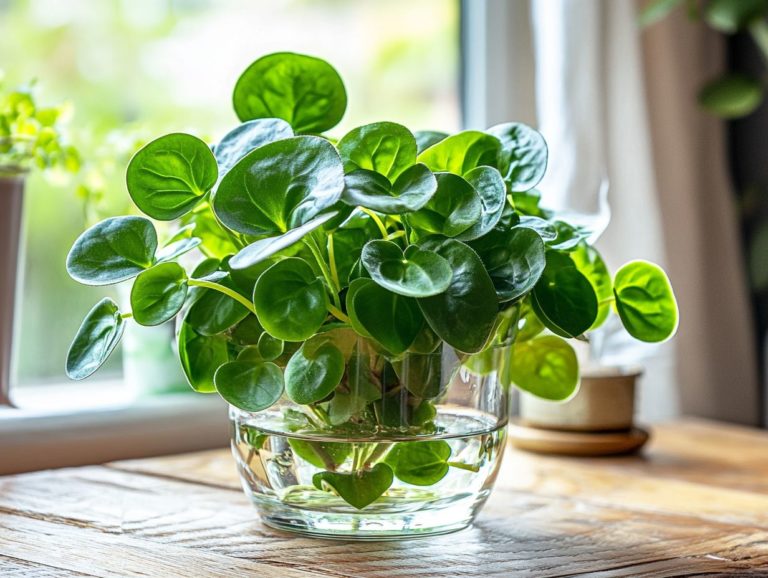Understanding the Role of Roots in Propagation
Roots play a crucial role in propagation, serving as the foundation for your plants’ growth and stability. They anchor your plants securely while absorbing essential nutrients and water, making them vital for healthy development.
This article delves into the different types of roots fibrous and taproots and explores various methods of root propagation, including plant cuttings, layering, and grafting. You’ll discover the factors that influence root growth and find care tips for nurturing your newly propagated plants.
Dive into the fascinating world of plant roots and see how significant they are in your gardening journey.
Contents
Key Takeaways:
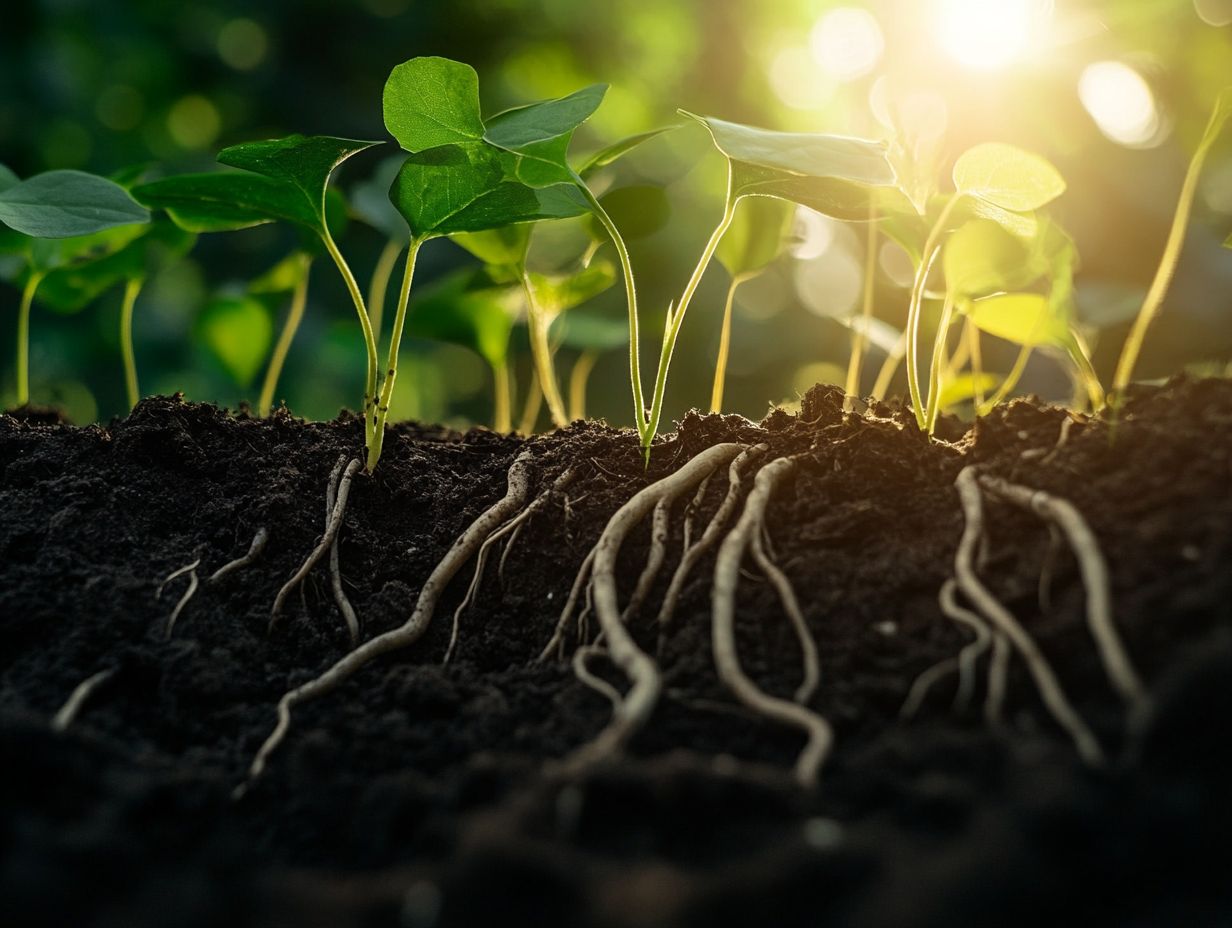
- Roots are essential for anchoring plants and absorbing nutrients.
- Fibrous and taproots have unique characteristics.
- Methods for propagating plants include cutting, layering, and grafting.
The Importance of Roots in Plant Propagation
Roots are critical in plant propagation, serving as the cornerstone for new growth and safeguarding the plant’s health throughout its life cycle. A robust root system not only anchors the plant in place but also plays a vital role in absorbing nutrients and water, which are essential for the thriving of cuttings.
Whether you consider yourself a seasoned plant parent or a budding enthusiast, understanding the pivotal role of roots will elevate your gardening experience. Techniques such as water propagation and soil propagation underscore their importance in nurturing healthy plants.
Functions and Significance
Roots dig deep into the soil, making sure your plants get the vital minerals and moisture they need to thrive. These underground structures are essential players in nutrient absorption and water uptake, both critical for the health and growth of your greenery.
Tending to roots often fosters a deeper connection with nature, building a sense of community among fellow gardening enthusiasts.
The health of your plants brings joy, creating a special bond with roots, enriching your life in ways that extend beyond the garden.
Types of Roots
Understanding the various types of roots, like fibrous roots and taproots, is crucial for anyone aspiring to master plant propagation. Each root type serves distinct purposes and supports different plant families, enhancing your gardening expertise.
Fibrous Roots
Fibrous roots feature a multitude of slender roots that extend from the base of the plant, providing exceptional soil stability and efficient water absorption.
This extensive network not only secures the plant to the ground, minimizing erosion, but also enhances moisture retention a critical advantage in diverse climate conditions. Plants like grasses, ferns, and many perennials exhibit this remarkable root system, allowing them to thrive in various environments.
To successfully propagate these fibrous-rooted plants, consider dividing them during late spring or early fall. Ensure that each division includes sufficient roots and shoots. By maintaining consistent moisture and well-draining soil during propagation, you ll encourage rapid growth, resulting in robust and stable plants poised to flourish beautifully in your garden.
Start exploring the world of roots today and see how your garden flourishes!
Taproots
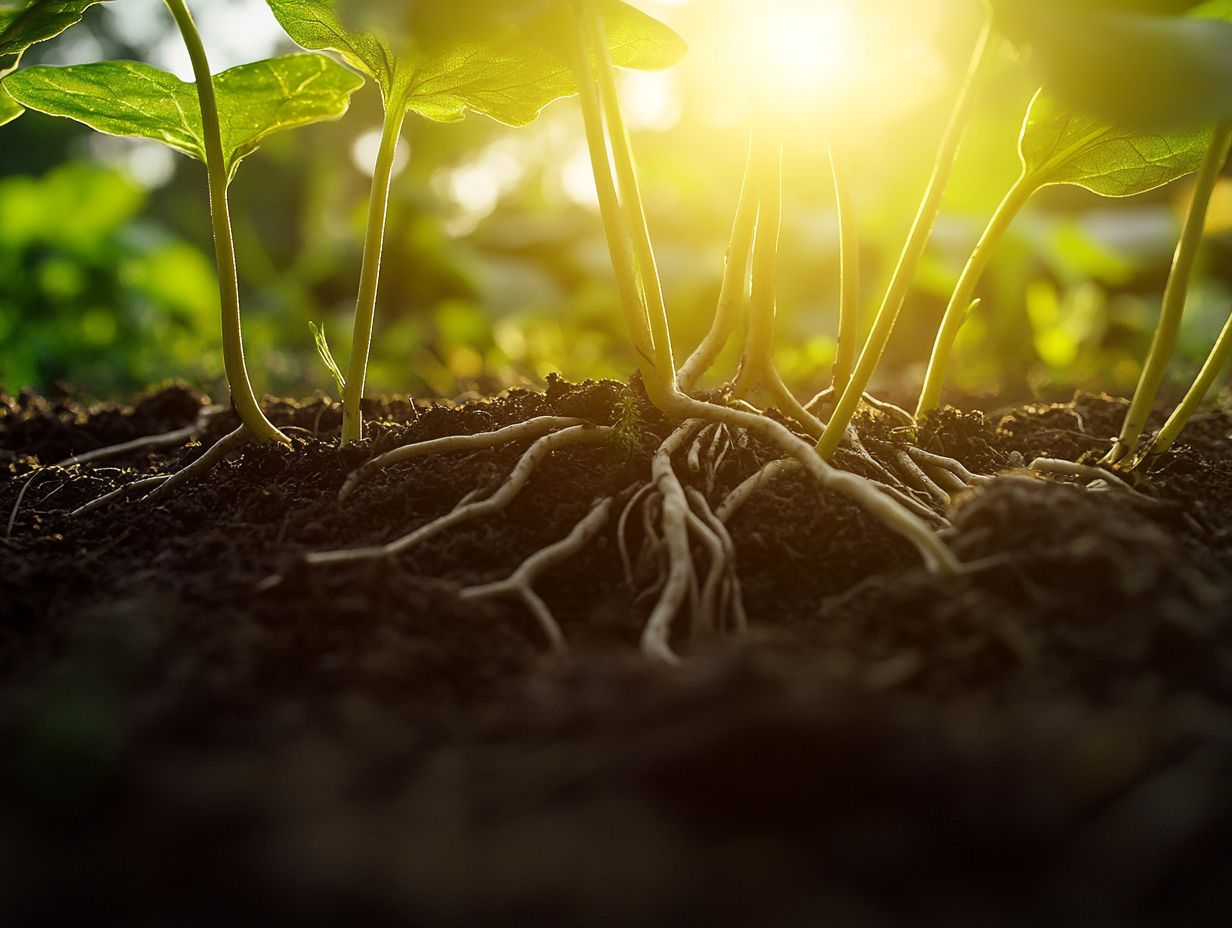
Taproots are defined by their single, thick root that delves deep into the soil, granting your plants access to vital nutrients and moisture from the lower layers. This remarkable structure enhances stability and allows the plant to flourish in nutrient-poor environments where other roots might falter.
Take carrots and dandelions, for example; they excel thanks to their impressive taproot systems, which reach far into the earth for essential elements like potassium and phosphorus. To keep your taproot plants thriving, proper care, such as regular pruning, is essential. Act quickly if you notice signs of decay to keep your plants healthy! Neglecting this vital practice can lead to root rot, ultimately hampering overall growth.
Be vigilant for signs of decay and trim any damaged roots to foster a robust system. Incorporating organic matter into the soil will nourish these deep-rooted plants, ensuring they reach their full potential.
Methods of Root Propagation
Root propagation can be accomplished through several techniques such as cutting, layering, and grafting. Each method provides distinct advantages for those seeking to enhance their plant collections.
Cutting
The cutting method involves taking root or leaf cuttings from a healthy parent plant and placing them in a clear glass container filled with tepid or filtered water. This allows them to develop robust roots.
To start, select a cutting source that displays vibrant leaves and sturdy stems. These attributes significantly enhance your chances of successful propagation. Once you ve obtained the cuttings, trim them just below a node (the point on a stem where leaves grow) and remove any excess leaves to improve their ability to absorb moisture and nutrients.
For the best growth, keep the cuttings in bright, indirect sunlight. Too much direct light can stress those tender young plants. Make it a habit to change the water every few days. This prevents stagnation and ensures the cuttings receive fresh nutrients. With a little care and attention, your cuttings can thrive and develop strong roots over time.
Layering
Layering is an advanced way to grow plants that allows a stem to form roots while still connected to the parent plant. You ll be amazed at how well this technique works for your plants!
One popular form of layering is air layering. This involves carefully wounding a stem and wrapping it in moist material to encourage root growth. To boost your chances of success, it s often helpful to apply rooting hormones, which stimulate root development.
Certain plants, like figs and camellias, thrive particularly well with layering techniques, giving you a reliable way to propagate your favorite varieties and elevate your gardening game.
Grafting
Grafting is an advanced way to grow plants that allows you to join parts from two different plants. This enables new growth from the grafted sections while enhancing the overall resilience of your plants.
This method hinges on selecting compatible varieties that share similar vascular systems, ensuring a successful integration. The process typically starts with preparing the rootstock and scion, making clean cuts, and aligning the cambium layers (the layers of the plant that grow) for optimal contact. Once you ve made the connection, wrapping the graft site will help support the healing process.
Among its many advantages, grafting promotes disease resistance and boosts growth rates, resulting in healthier plants. As a new plant parent, it s essential to keep a close eye on your grafts. Provide them with adequate moisture and protection from harsh conditions to facilitate their recovery and thriving development.
Factors Affecting Root Growth
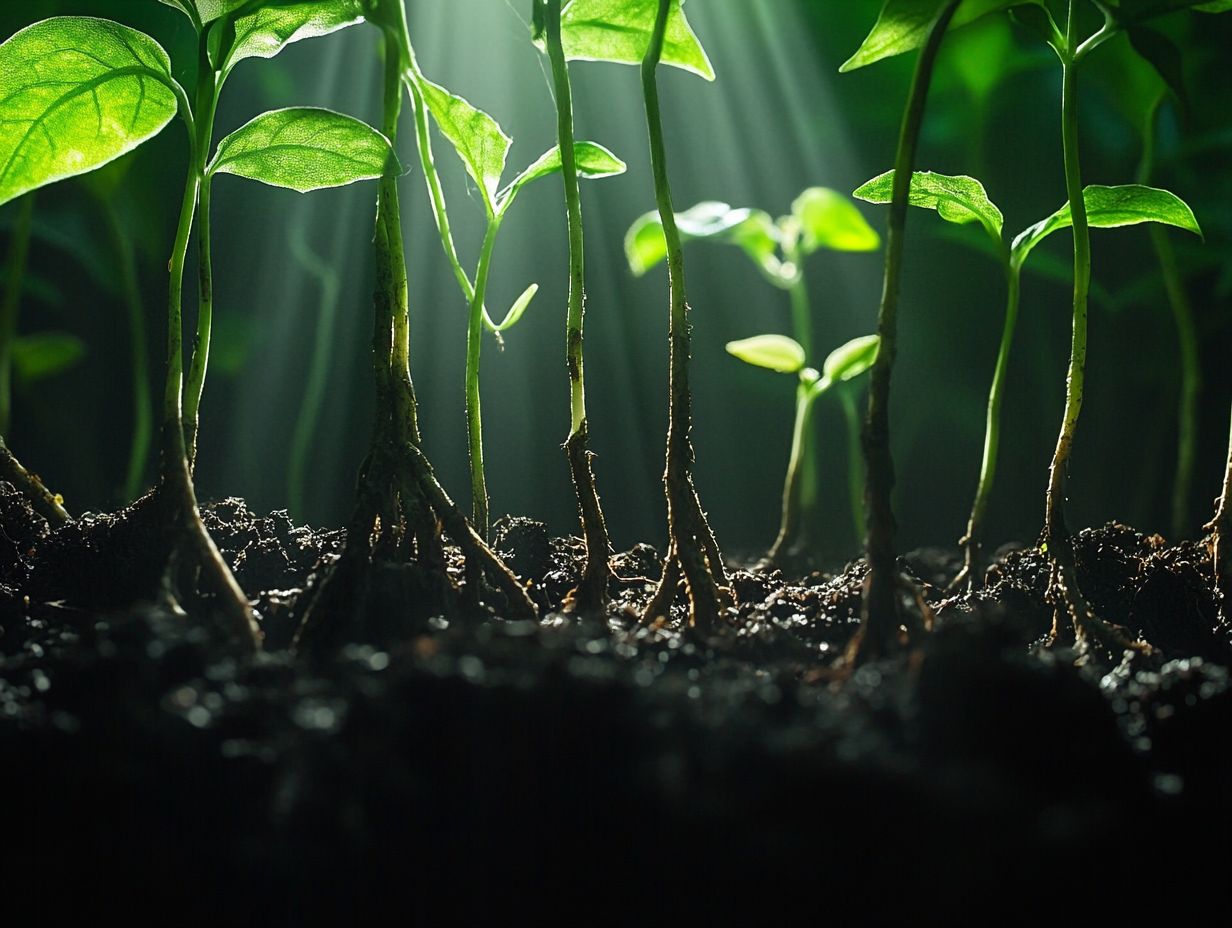
Various factors can profoundly influence root growth, encompassing both environmental conditions and genetic traits. Together, these elements play a crucial role in determining the overall health and viability of the plants you propagate.
Environmental Factors
- Light intensity
- Watering practices
- Soil quality
- Temperature
These factors are critical to the health and growth of plant roots. They influence not only the growth above the soil but also the vitality of the root system.
Providing adequate light enhances photosynthesis, the process plants use to turn sunlight into energy, which supports root development. Consistent watering practices keeping the soil moist but not soggy are essential for preventing root rot while promoting necessary oxygen exchange.
Soil quality is equally important. Using a well-draining medium enriched with organic matter can boost nutrient availability for the roots. Maintaining an optimal temperature, ideally between 65 F and 75 F, allows roots to absorb nutrients more efficiently, promoting robust plant growth.
Genetic Factors
Genetic factors shape the inherent traits of plant varieties. They influence how effectively different species and cultivars can acclimate to new environments.
For instance, some families may show enhanced root vigor, while others may struggle with root elongation or branching. Understanding these variations helps you choose cutting sources that are likely to yield successful propagation outcomes.
By selecting genetically diverse parent plants, you can improve root development, resulting in sturdier and more resilient plant stocks that thrive in various conditions.
Caring for Newly Propagated Plants
Caring for your new plants is crucial! You’ll need to balance transplanting, watering, and ongoing maintenance carefully. This approach is vital for ensuring their health and fostering growth in their new environment.
Transplanting and Maintenance Tips
Transplanting is essential in nurturing your newly propagated plants. It requires careful attention to soil quality and root development for optimal growth.
Using proper techniques during this process can minimize the risk of transplant shock, stress that plants experience when moved to a new location. Start by choosing a well-draining potting mix that suits your plant species, ensuring it has a balanced nutrient profile.
When preparing the new planting site, gently loosen any tightly bound roots and dig a hole that is twice the width of the root ball but no deeper than the root system itself. After placing the plant in its new home, fill in with your chosen soil and pay close attention to the watering schedule. A deep initial soak, followed by allowing the top inch of soil to dry between waterings, encourages strong root growth.
Pruning wilted or damaged leaves can stimulate new growth, making the transition smoother and more successful.
Frequently Asked Questions
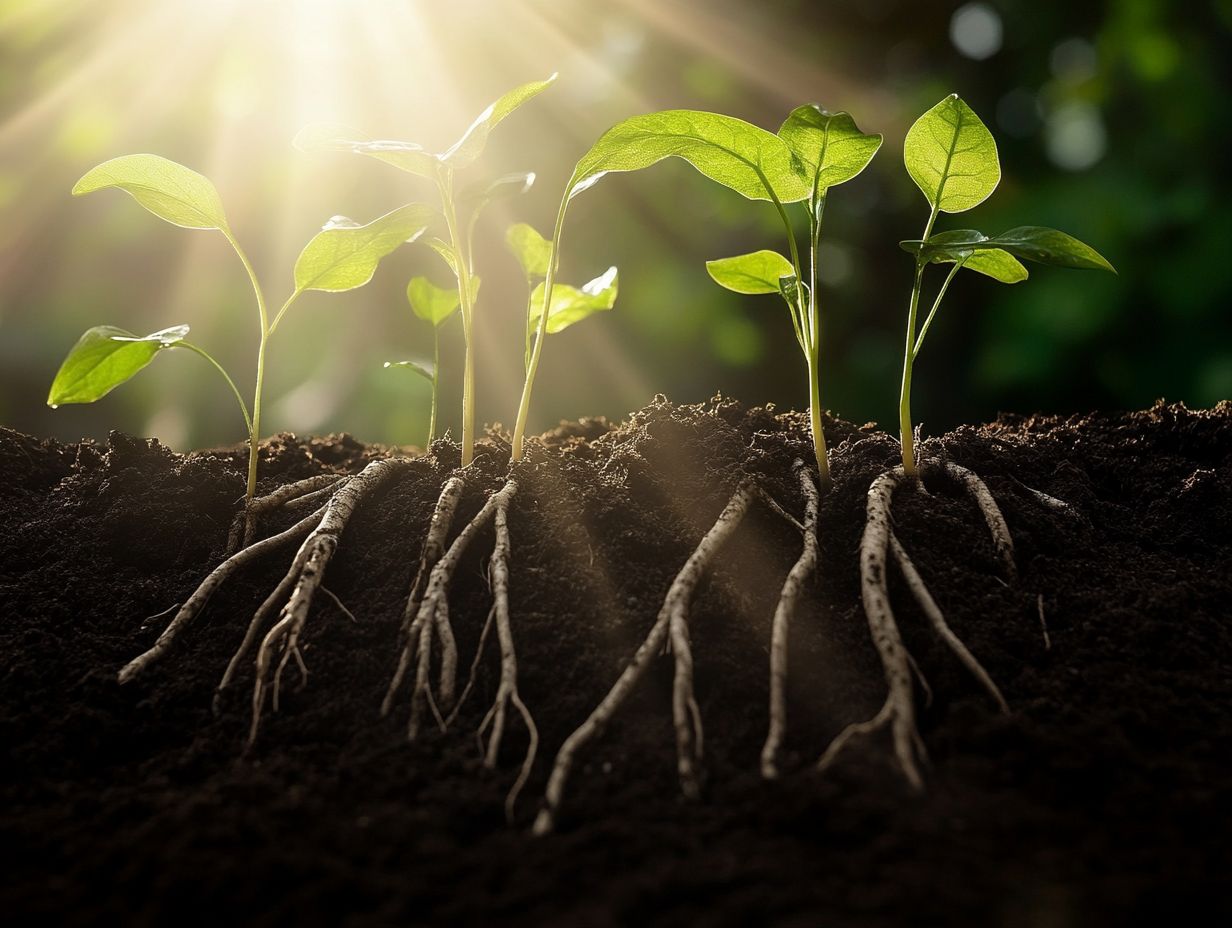
Here are some common questions about root propagation:
What is the role of roots in propagation?
The roots of a plant play a crucial role in propagation by providing necessary support and nutrients for the growth of new plants.
How do roots aid in propagation?
The roots absorb water and minerals from the soil and transport them to the stem and leaves. This process allows for photosynthesis and growth, essential for developing new plants in propagation.
Can roots be used for propagation?
Yes, certain types of plants can be propagated using their roots. This method is called root division, where a portion of the main root is separated and planted to grow into a new plant.
What factors affect root growth in propagation?
The quality and condition of the soil, moisture level, and nutrient presence can all impact root growth. The overall health of the parent plant also plays a role.
Are there different types of root systems in plants?
Yes, there are two main types of root systems: taproot and fibrous. Taproots have a main root that grows deep into the soil, while fibrous root systems have many smaller roots that spread out near the surface.
Do all plants have the same type of root system?
Different plant species have various root systems.
Some plants can even have a mix of two types: a taproot, which grows downwards, and fibrous roots that spread out near the surface.
Isn’t it fascinating? These adaptations help plants thrive in different environments!

